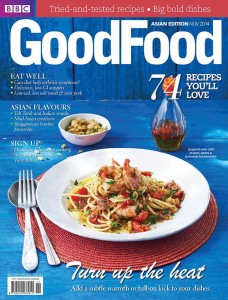All my workshops, lessons, programs, courses, same as most important activities held by FAB Italia Lifestyle of other institutions which involve or interest the Italian Community in Singapore!
FAB Italia wants you to have a great time here with us! If you are a full time resident or just visiting Singapore for your holiday or the weekend FAB Italia is where you need to check to see what is happening in our workshops and venues. Check here to see where there are our latest events.
Check back with us often!

Estate Italiana! Italian Summer!
Finally I am in Italy, spending my Summer time between my home on the top of the Belvedere hill of Santa Marinella, 60 km far from Rome, and the Capital of Italy. August is for the Italians the holy month for vacation, because of temperature that, especially in the Centre and the South, can even reach 45C. Worthless to say that whoever can do it, they will take a break and go to the seaside or to the mountains for some cool weather. I took the opportunity to return home to share the pleasures and burdens of being with my family of origin: all together, including dogs, parrots, fish, turtles, and one guinea pig. As a typical Italian family, we are all together with my mother, my brothers and several grandchildren who happily jump on the belly of their uncle who see once a year and miss so much… From the terrace you can admire a unique panorama 50 km of coastline and blue sea, surrounded by pine trees and Mediterranean scrub. I have before me the tranquil Tyrrhenian Sea, the sea of the Western Italian coast, which is part of the larger Mediterranean Sea, the Mare Nostrum of the Romans. The sea, in its ambivalent nature of storm and calm, has always represented much for the peoples of the peninsula. Invasions, the fear of the unknown, trade, exchange of experiences with other cultures and peoples. The Mediterranean Sea is a large “salt lake”, which has arisen in recent times and huge amount of water still enters through the pillars of Hercules. That will increase the level of 1.5mm every hundred years. As such, its salinity -due to reduced evaporation relative to the surface of the water- and its depth -shallower than the one of the oceans- mean that its fish fauna is nourished especially near the coasts or in relatively shallow water or rock. This makes the taste of fish stronger, special high-quality, and pleasing to the palate. The Japanese are buying in Sardinia the famous yellow-fin tuna and the lobsters of Alghero are tasty, as well as the blue fish. This wealth of fish, combined with the geography of Italy, a peninsula with two large islands, Sardinia and Sicily (and up to the pre-Napoleonic time even Corsica), and a myriad of smaller islands, becomes a basic part of the healthy “Mediterranean diet” and enriches the already very numerous gastronomic repertoire of our country with a myriad of recipes based on fish, molluscs and crustaceans. Here are just a few recipes, while I taste a very simple and tasty dish of fried fish surrounded by the colours of the summer sun! I have some simple choices, with blue fish or typical products, rather than the commercial fish such as swordfish can be. Blue fish has a lot of Omega 3 and is a healthier choice than big fish, which has among other things high levels of toxic mercury all over the oceans, but fresh sardines of course are not easy available in South East Asia. You might try the following recipes with the fish available here. For this reason I include a simple appetizer with the “bottarga” and tuna from Sardinia, just to remind you of the uniqueness of the ingredients but the simplicity in the flavours of the cuisine of Italy.
Bruschetta with tuna and bottarga – The roe is produced mainly in Sardinia and Sicily, thanks to the contacts that both islands have had with the Arabs. The roe is a technique of maturing eggs (mostly …) and has ancient origins, dating back to the Phoenicians, the “Sea Peoples” who would live in Sardinia in ancient times. This recipe comes from the fact Sardinia. Since it will not be easy to find homemade bread is recommended Sardinian bread.
Ingredients for 4 people: 250 gr of stale homemade bread; 250 grams of tuna in oil; 2 cloves of garlic; 1 sprig of parsley; grated bottarga; ½ glass of white wine; extra virgin olive oil, salt and pepper.
Directions: Cut the bread (which should be 2 or 3 days before) thick slices and let it brown in the oven; heat a few tablespoons of oil in a frying pan, sauté the garlic cloves peeled and crushed well and then add the drained tuna and continue to cook until the tuna you will not be softened. At this point add the roe, wet with wine, let it evaporate, stirring constantly and flavored with a few leaves of parsley, salt and freshly ground black pepper fresh. At this point, remove the slices of bread from the oven (they should still be warm), place them on a large platter, spread them still warm with the sauce and serve immediately.
Sarde in Tortiera: Sardines tortino; a typical recipe from the South, combining fish with vegetables, grated and baked for a crusty pleasure.
Ingredients for 4 people: 700 gr fresh sardines (you can use other small fish, or sardines in oil as well); 2 cloves of garlic; 1 bunch parsley; 20 gr bread crumbs; 2 medium potatoes; 2-3 plum tomatoes (or equivalent, just dry them with salt); 1 medium white onion; extra virgin olive oil; salt; pepper.
Description: Clean the sardines, take away their heads and open them like a book, wash, dry, season with salt and pepper and close them. Peel the potatoes and cut into thin slices, cook in boiling salted water for 5 minutes, drain. Thinly slice the plum-tomatoes in the sense of length, finely chop garlic and parsley. Coat a pan of 18 cm in diameter with a moistened disc of baking paper. Brush it with oil, put a layer of potatoes on the bottom, half of the sliced onion, a layer of tomatoes, season with a pinch of salt and pepper. Put have half of the sardines in a radial pattern over the tomatoes, sprinkle with half of the chopped parsley and garlic, with the breadcrumbs and a drizzle of olive oil. Repeat the layers with potatoes, onions, tomato; salt and season with a little oil and most of the remaining garlic and parsley, and bake at 180C for 10 minutes. Remove the pan from the oven, place the last layer of sardines, drizzle with the olive oil and the leftover of garlic and parsley, mixed with a tablespoon of breadcrumbs. Add a few slices of the remaining onion and cook 5 minutes under the hot grill. Let it stand 10 minutes before serving.
Squids with aubergines: something different, and hot, from usual fried squids.
Ingredients for 4 people: 2 cloves garlic, finely chopped; 2 tablespoons olive oil; juice of 1 lemon; 2 teaspoon sweet chilli sauce; 2 small red chillies, seeded and chopped; 700 gr baby squid, cleaned, tubes and tentacles separated; vegetable oil for brushing; 2 medium aubergines (eggplants), very thinly sliced; 115 gr rocket leaves; lemon wedges, to serve.
Description: In a bowl, mix together garlic, olive oil, lemon juice, chilli sauce, and chillies. Stir squids into marinade, cover and leave to marinate for 2 hours. Heat a griddle until smoking and brush with oil. Grill aubergine slices in batches for 2 minutes on each side. Transfer to a warm oven to keep warm. Remove squids from marinade and reserve the marinade. Heat griddle until searing hot and fry squids for about 20 seconds (depending on your grill) on each side, then transfer to a plate. Put marinade into a pan and heat gently. Arrange aubergine (eggplant) slices on 4 warm plates. Pile the squids on top and spoon over a little marinade. Surround each portion with a ring of rocket leaves. Serve at once, with lemon wedges.
Eating in Rome!
Whenever I go back to my city, I cannot wait to visit my restaurant mates, or friends, who will cook for me such delicious, yummy, and sometimes heavy food, that my wife is always scared that I come back with 10 kg more, as it happened last year.
The problem is that Italians, and not only Italians, cannot resist to Italian food, and Romans cannot resist to the temptation of the Roman cuisine once we are back in town…
Roman cuisine is authentic and traditional from the appetizers to the desserts, and full of history and anecdotes. The primary aim of the recipes was to provide tasty and hearty dishes from less expensive ingredients, which were filling after a hard day of labour. In fact some classic traditional appetizers can serve as a quick and complete meal for those of us who lead more sedentary lives. Fried food triumphs in appetizers; this simple cooking method, which requires some attention, gives rise to some of Roman cuisine’s best recipes. Stringy mozzarella is another characteristic ingredient that makes these simple dishes even better. The irresistible bruschetta is a truly frugal dish. In olden days it was only considered a snack for those who worked outside: farmers, shepherds, woodsmen… It remains a perfect choice for beginning a meal, and it is great accompanied by a glass of wine from the nearby Castelli Romani hills. Traditional Roma first courses absolutely mirror the people of Lazio’s passion for traditional and intense flavours. They include hearty soups (chick peas, or fava beans) and stews –classics based on legumes or highly original dishes such as the unusual but absolutely tasty combination of pasta and broccoli with rayfish- as well as appetizing quick pasta dishes or pasta topped with amazing meat sauces. Amatriciana, Carbonara, Gricia, Cacio, Arrabbiata, e Pepe are among these recipes. There is also abundance of delicate flavours, such as “fettuccine alla papalina” or “gnocchi di semolina”, butheary ingredients are definitely more common, such as cured pork (guanciale, which is similar to lard, bacon, pork jowl), the intense flavour of garlic and hot pepper, and above all the final touch is provided by sharp pecorino romano cheese –currently protected by a DOP (Protected Origin Denomination) label- which has been produced in the Agro Romano since the days of the Roman Empire. The second courses give an idea of “the way Rome was”. The pastoral countryside, subject of so many paintings from the nineteenth century, is still alive in the rooted tradition of suckling lamb, which is prepared in many different ways (a typical holiday treat). Roman cuisine reflects the vivacity and colour of Testaccio, the home of Rome’s market and the historic slaughterhouse, which gave rise to the widespread use of the famous “fifth quarter”: the less esteemed meats (like oxtail) were destined to the table of the commoners, who put them to good use considering that these dishes are still favourites. The seafood cuisine is not as plentiful, but it should not be forgotten that once Rome was separated from the sea by forests and swamps, which somewhat slowed the development of seafood dishes. However, the seafood dishes that top traditional menus are appreciated for their flavour and creativity –reinterpreting the characteristic of Roman cuisine in a mariner’s key. The side dishes reflect the true specialties of Roman countryside: artichokes, broccoli, fava beans, fennel, salad tomatoes, zucchini, indivia, chicory, and many other varieties of specific Romanesque breed vegetables which are truly unique, enriching the local cuisine with excellent side dishes. What we can say about the famous “puntarelle”? The plant is also sold in other areas as Catalogna chicory, but Rome invented a new way of using it. Instead of using the leaves, in Rome they are used as crunchy sprouts, which are cut with mastery so that they curl and then they are topped with an irresistible dressing. It is a truly original idea and an absolutely delicious side dish. Another element that characterizes Roman side dishes are the tasty kosher specialties that can be found in the historic Jewish quarter “Ghetto”, and which have always adorned Roman tables.
With such a rich variety of food, Roman cuisine does not leave much room for high-toned patisserie: pastries are not its most creative expression. Desserts are somewhat limited since they are mostly made up of holiday tets for Carnival, the Feast of St. Joseph (its famous bigne, bot fried or in oven), or even Christmas, such as the complicated “pangiallo romano” which is difficult to find these days. By the way bigné, castagnole, ricotta cheese pie, frappe (crispy carnival fritters), and maritozzi, which match so nice with cappuccino, don’t leave us alone. Few and essential, but sincere: they are worth trying for their simplicity which is always a pleasure. A bit as we Romans are. Therefore when in Rome do as the Romans do and “mangiamo” (let’s eat) with pleasure these wonderful dishes. Or, in Roman dialect, “magnamo, all’ombra der Colosseo o der Cupolone” (let’s eat, covered by the shadow of Colosseum or St Peter’s Dom)!
Crostini with mozzarella and anchovies (appetizer)
Easy – 30 minutes – the original recipe for this delicious appetizer called for “provatura” instead of mozzarella. “Provatura” which is the delicious cheese created before making mozzarella, used to be available in the Lazio and Campania regions. In Italian, “prova” means to try or test, and it was the portion of the cheese they extracted to test whether the consistency and grain of the curd was ready to form the mozzarella. It is not easy to find unless you know an artisan cheese maker.
Ingredients: 250 gr of fresh mozzarella; 100 gr of butter; 12 slices of Italian bread cut into squares (or circles) measuring minimum 5 cm per side; 8 anchovies, rinsed of salt; milk, salt, pepper to taste.
Directions: Cut the mozzarella into 12 thick slices and dress them with salt and pepper. Alternate slices of bread and mozzarella on skewers and then bake at 200C. in the meanwhile melt the butter in a pan on a low heat and sauté the anchovies, mixing well, until they fall apart. If necessary add a little milk in order to form a cream. When the bread is crunchy and the mozzarella has melted, remover the skewers from the oven and cover them with the anchovy cream. Serve hot.
Fettuccine alla papalina (first dish, literally “Papal/Pope-style”)
Easy – 30 minutes – This dish has historic origins. It was perfected in the 30sby a cook from the working class Borgo neighbourhood of Rome to satisfy the palates of Cardinal Pacelli and then Pope Pius XII. That is how the “aristocratic” version of the more typical pasta alla carbonara was born. The ingredients are richer and more refined, and the flavour is more delicate. Purists say that the original recipe did not contain peas, but they are a nice colourful addition and they have been a common ingredient for some time.
Ingredients: 400 – 500 gr of fresh egg fettuccine; ½ onion finely chopped; 200 ml of cream; 100 gr of salt-cured ham cut into chunks; 3 eggs; 200 gr of fresh or frozen peas; 100 gr of grated parmigiano cheese; butter, salt, and pepper to taste.
Directions: Melt the butter in a pan over a medium flame. Add the onion and ham, and after a few minutes add the peas, salt and cook for 10 minutes, then add the cream and cook for another 5 minutes. Turn the stove off, add the beaten eggs, the parmigiano cheese, and delicately mix all together. In the meantime boil the fettuccine, drain and pour it into the pan together with the topping. Stir and top with fresh grated pepper before serving.
Abbacchio scottadito (second course, crispy lamb ribs, literally “burning your finger”)
Easy – 30 minutes – The excellence of simplicity. The success of this dish is all in the quality of the lamb (in Rome, suckling lamb is generally used). In Italian, scottadito means “burn your finger”, because these tasty ribs are irresistible to eat with your fingers the moment they are removed from the flame… which inevitably leads to the proverbial burnt finger!
Ingredients: 1 kg of lamb ribs; lemons; extra virgin olive oil, salt, and pepper to taste.
Directions: Flatten the ribs with a meal mallet, brush them with oil on both sides and add salt and pepper. If you like herbs you can also add a little tarragon. Cook them on a grill over a high flame (preferably over a charcoal fire) until they are crispy. You can also cook them on a very hot griddle for about 4 minutes per side. Serve with wedges of lemon as soon as they are ready.
Carciofi alla Giudia (side dish, Jewish style artichokes)
Easy – 30 minutes – This is the most famous dish of the Roman Jewish Community. The recipe owes its success to its simplicity, which highlights the qualities of the artichoke to the outmost. Artichokes are frequently used in traditional Roman specialties.
In order to properly clean them, before beginning it is better to rub your hands with lots of lemon juice. This helps keep them from staining and it will make them easier to clean. In Asia artichokes are quite rare, and you can find prepared ones, by the way if you buy your artichoke with the stem remove any leaves which have thorns, detach the “head” of the artichoke, called the “capolino”, and throw away all of the stem except the most tender part (2-3cm). The outer leaves of the artichoke, called “brattee”, are hard and fibrous and they need to be removed. To do this, slip a knife under each leaf and pull it away from the stem until it detaches. To reach the heart of the artichoke, you need to take off at least two or three layers until you reach the thinner and lighter coloured leaves. You also need to cut off the tip of the artichoke, which is the hardest part. To prepare the stem of the artichoke, peel away the fibrous exterior leaving only the central core (which is lighter and tenderer). After having cleaned the artichokes, they should be kept in water and lemon juice until you are ready to cook them.
Ingredients: 6-8 cleaned Romanesque or Cimaroli artichokes (other varieties work fine as well; lemons; lots of extra virgin olive oil, salt, and pepper to taste.
Directions: Soak the artichokes in water and lemon for around ten minutes, drain and allow them to dry. Then beat the artichoke face down on a counter top to open the flower. Heat oil on a medium flame until it boils and then place the artichokes into the oil with the flower side down by holding them on the bottom of the pan with a fork until they are crispy. At this point, turn the artichokes upside down and let then cook until the heart is soft. Drain the artichokes and lay them on a paper towel to dry. Top with salt and pepper; they are best served piping hot.

As a for of respect for the death of the Founder Prime Minister, I will suspend all of my events and activities till Sunday.
After all what you have done to make Singapore what it is today, rest in peace with respect and honour, Mr Lee Kuan Yew.
May younger generations remember -even if they may not agree with everything because they don’t know how it was in the past- your example with the hard job, sacrifice, sweat, and blood you gave to forge this nation. And contribute democratically and in cooperation for the social, cultural, economical growth in the future.

After the funeral service, the late Mr Lee will make his final journey to Mandai Crematorium. The cremation service will be private.
The funeral procession for Mr Lee Kuan Yew on Sunday, March 29, will pass significant landmarks like the Old Parliament House, as well as heartland areas.
The procession, which will cover a distance of 15.4km, will commence at 12.30pm. Other landmarks include City Hall, the Padang, NTUC Centre and Singapore Conference Hall.
Members of the public can line the route from Parliament House to the University Cultural Centre (UCC) at the National University of Singapore, where the funeral service will be held, said the State Funeral Organising Committee in a statement on Thursday.


